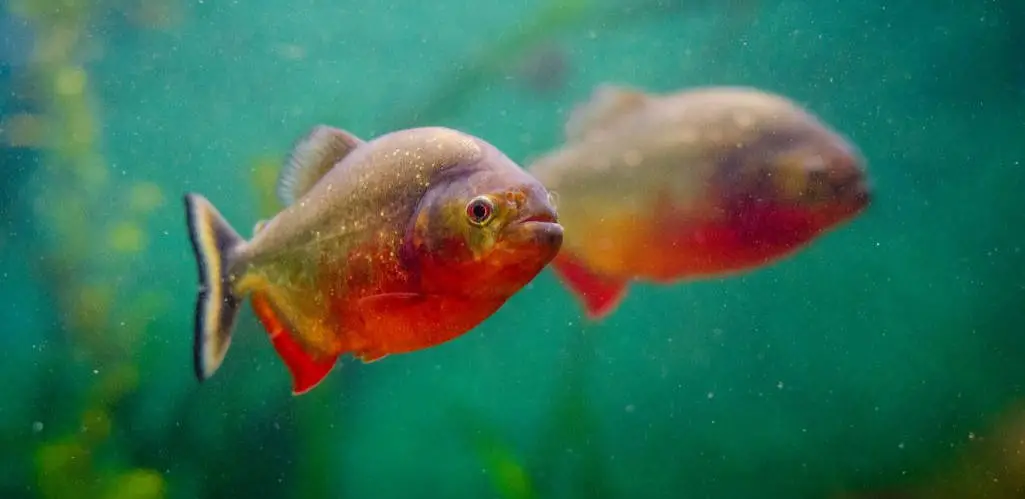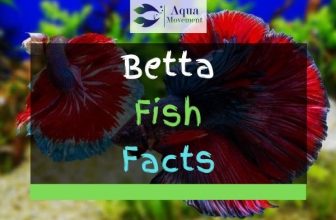5 Ways On How To Soften Aquarium Water Naturally And Chemically
As a proud fish owner, there is little doubt that you want to provide the best possible home for your fish. That’s why you’ve come to this site, right? Well, as we know from our own homes, there is lots of different factors that go into making a comfortable living environment.
Of course, it must be clean and healthy (which means adequate filtration and regular cleaning), it should be sufficiently stimulating and should also have the right level of lighting. But there is one requirement that us humans don’t have to worry about; the water chemistry must also be right.
You don’t have to be a proper chemist to make sure your fish have the right living conditions, but it does help to know the basics about this branch of science. That is because what’s in your fish’s tank water (or what’s missing) can have a huge impact on their long-term health and general well-being.
Often species can only survive in very specific pH or water hardness conditions for example, so it is crucial that you get these things right. If not, you might inadvertently be slowly poisoning your fish.
Water hardness is just one element of this water chemistry that is so important, and this article will cover all the basics including some simple solutions for how to soften aquarium water naturally and chemically.
Table of Contents
What Is Water Hardness?
The first question on people’s mind may be, what exactly is water hardness and why should you even care about it? Well, in order to use the inventive solutions offered in this article you should at least have a basic understanding of this phenomenon.
Water hardness is a term used to describe the concentration of dissolved minerals in water. If water has a lot of dissolved minerals present, then it is described as hard, but if there is few minerals present, then it is referred to as soft. Simple, no?
These minerals can consist of many different substances, but the most common is calcium compounds such as calcium oxide or calcium carbonate, commonly known as limestone.
This is why the white deposits that built up in your kettle (when you use hard water) is known as ‘limescale’. Most of these dissolved minerals are harmless to us humans, and many people even prefer the taste of hard water.
However, to your precious fish, the hardness (or amount of dissolved minerals) of the water can be a matter of life or death. Levels of hardness that are not optimum can cause stress or in extreme circumstances illness and death in fish, although some breeds are notably hardier than others.
Video: “Aquarium pH and Water Hardness”
Why Do I Have A Water Hardness Problem?
The levels of minerals in water around the globe is not uniform, it varies heavily from place to place. In fact, it can even vary strongly from town to town and depends primarily on where you source your tap water from.
If the reservoir that you get your mains water from is located in area of limestone geology for example, then it is likely that your local water supply will be very hard indeed.
Other areas may have less permeable bedrocks and so they will not be as susceptible to hard water. Unfortunately, it is purely a matter of geography.
How Is Water Hardness Measured?
There are a number of differed ways of measuring and recording the levels of water hardness in your tank water.
Fortunately, it is now possible to buy simple electronic probes that you can simply immerse in your tank and it will give you a direct reading. Other chemical methods are also available.
This means that you don’t even need to send away sample to a lab to get a proper indication of the water hardness, which is a big step forward.
Water hardness is recorded in a number of different units, and you should have a feel for these different scales so that you can tell if you have a problem or not. Firstly, water hardness may be recorded in terms of ppm (parts per million) or dissolved minerals.
If the value of your water is below 100 ppm, the water is quite soft.
Between 100 and 300 is considered normal and this is a good territory for a lot of aquatic species.
If the value of the hardness is above 450 ppm, then this is so hard that it is commonly referred to as ‘liquid rock’.
This can be problematic for a lot of different aquatic species.
However, units of ppm are not in widespread use among aquarium owners. It is more common to hear owners talk in terms of degree of hardness (DH).
Fortunately, it is easy to convert. 1-degree hardness is equivalent to 17.85 ppm. Also, you should be aware of the difference between general hardness (GH) and carbonate hardness (KH).
While general hardness measures the calcium (and magnesium ions), carbonate hardness indicates the level of carbonates present.
However, all you need to know is that both of these are indicators of water hardness, though they might have different specific definitions relevant to experts.
Does Water Hardness Have Anything To Do With pH?
Most people know that pH can have a big effect on water and the types of fish which can survive in your tank. pH is a direct measure of the acidity or alkalinity of a water, and again, most aquatic species will have a particular range of pH within which they are comfortable.
The pH of normal, neutral water is 7, and water beneath this is considered slightly acidic, while levels above 7 suggest the water is alkaline. If the pH level strays outside of this region then you could be faced with an aquatic disaster.
It is important to understand that there is an inter-relationship between pH and water hardness levels. Most of the dissolved minerals referred to early have alkaline anions, which simply means that they have a tendency to increase the pH of the tank water (i.e. make it more basic and less acidic).
Hence, harder waters tend to have higher pH levels and softer waters tend to have lower pH levels.
Thus, before you make any drastic measures to change the hardness level of you water, by implementing the tips on how to soften aquarium water shown in this article, you should make sure that your fish can tolerate the accompanying change in pH.
Otherwise, you could also have a disaster on your hands.
Why Should You Soften Your Aquarium Water?

Before learning directly how to soften aquarium water naturally and chemically, you should consider the benefits of doing so. There are some potential benefits to taking this action, especially if your tank water is currently very hard.
For example, some fish species may only breed in soft waters. For example, although tetras will happily live in hard water they will generally not spawn unless immersed in soft waters.
Fortunately, this is a rare enough case, and a lot of fish species will happily both breed and live in quite hard waters, even if they are not native to hard water areas.
Other fish are so delicate that they will only survive in soft waters. They tend to be very demanding and sensitive species, like wild caught discus, which should really only be kept by quite advanced hobbyists.
Problems that come with softening aquarium water
There are certainly problems that come with softening water, that it is important to consider and plan for. For instance, soft waters tend to exhibit more pH instability than harder waters, where the dissolved minerals can act as a chemical ‘buffer’.
Wild swings in pH levels in softer waters can really threaten fish health. Also, filter bacteria tend to thrive better in hard water conditions, so it may be difficult to achieve efficient biological filtration in soft water tanks.
Also, if you are not careful, techniques for softening water can be expensive both in terms of capital start up costs, and indeed running costs.
All this suggests that, unless totally necessary, you might consider trying to work with the hard water you naturally have. There are so many aquarium species that will happily survive in hard waters, include hardy species that originally come from soft water ecosystems.
Many of the artificially bred species that adorn our aquariums nowadays have evolved to thrive in the hard water conditions that come from domestic water supplies.
For example, some of the most popular aquarium fish in the world, including guppies, south american and African cichlids, and even paradise fish will thrive in hard water conditions, which can be achieved with little to no work!
How To Soften Aquarium Water Naturally And Chemically?
If it is absolutely unavoidable, and you absolutely need to learn how to soften aquarium water, then thankfully the process does not need to be that painful.
There are a number of simple methods to affect change in your tank, and help to slowly but surely bring down the level of dissolved minerals in your tank. We will discuss a few of these techniques in turn.
1. Reverse Osmosis Filter
[amazon box=”B01FNAPGPA”]
First of all, you should consider changing the source of your water to a softer alternative. For example, you might consider using a reverse osmosis (RO) system.
Reverse osmosis is a very modern filtration process, in which a complex, thin membrane is used to prevent the passage of mineral compounds, and only allow the passage of water molecules.
Hence, the resulting water is very pure, like distilled water. Unfortunately, such systems can be bulky and are often expensive, so they will not be suitable for all situations.
- Best natural method to soften your aquarium water
- Guaranteed 0 ppm water
- Works with freshwater and saltwater
- Most expensive solution
Check Price and Reviews on Amazon
Video: “How to Set up an RO/DI Unit for Fish!”
2. Rainwater
A simpler, more homespun alternative is to collect and filter your own rainwater. Because rainwater is essentially evaporated groundwater (with all the minerals left in the ground), it is naturally very soft.
Thus, if you can collect it and clean it, then there is no harm in using this in your tank, especially if you combine it with some other source.
In fact, you might well consider combining and mixing a few different sources to get the perfect cocktail for hardness in your tank water.
- Doesn’t cost money
- Natural way to soften the water
- Will sometimes not rain for weeks
Video: “Rain water for your aquariums / tanks”
3. Water Softener Pillow
[amazon box=”B002DW0GQQ”]
A more simple, off the shelf method may be to use a water softening pillow. This is a type of ion exchange method, where the dissolved minerals in the water become trapped in the ‘pillow’, and instead sodium is released into the water.
The pillow can be easily slotted into the trays of most canister filters, and is quite an effective method of chemical filtration.
Ion exchange is a very common industrial process to soften water as well, so you know that this is a tried and trusted method.
- Fits most canister filters on the market
- Can be reused after it is recharged
- Not natural
Check Price and Reviews on Amazon
4. Driftwood
[amazon box=”B0758932YQ”]
There are some other natural solutions. For example, by simply placing some driftwood in your tank, you can soften your water.
The reason for this is the driftwood releases harmless chemicals called ‘tannins’ into the water which naturally cause a decrease in hardness.
Of course, this has the added advantage of being a very aesthetically pleasing feature for your tank.
- Aquarium decoration that softens the water
- A natural solution
- Must be boiled/soaked in water before use
Check Price and Reviews on Amazon
Video: “How to Prepare/Clean Driftwood for Aquarium Use”
5. Peat Moss
[amazon box=”B00025642Q”]
Peat moss serves a similar function. It can be used in a canister filter or else directly in the tank to try and reduce the hardness of the water.
Although you should research to make sure the exact type of peat you plan to use is suitable for the purpose.
- All-natural
- Contains humic acid, tanning agents, and trace elements that are essential for various life processes
- Can turn the water yellowish-brown
Check Price and Reviews on Amazon
Video: “How to lower your PH on your aquarium”
Conclusion
In this article we have explained the basics of water hardness and why it is important for all aspiring tank owners to know about. You should realize how it affects other things like pH, what is the source of the hardness and why it is crucial to remain in control of this quantity.
It cannot be overestimated the level of impact that it can have on your fish’s health and their overall well-being.
Most importantly, a number of techniques on how to soften aquarium water naturally and chemically were illustrated. Keep these in mind the next time you go to tamper with your tank’s water hardness.
The techniques vary from very simple natural systems (like installing clean, contaminant free driftwood in your tank) to complex, device heavy techniques (like using a reverse osmosis system to soften the source water)
It has never been so important to understand how to soften aquarium water, but by following the guidelines offered here, you can’t go wrong




